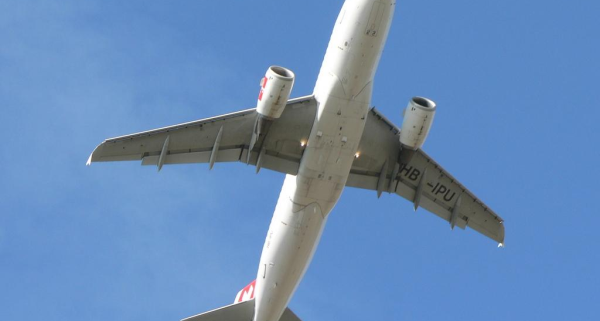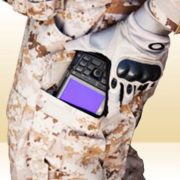 One of the hottest topics in the unmanned systems community is civilian applications. As Smithsonian.com reports in Drones Ready for Takeoff:
One of the hottest topics in the unmanned systems community is civilian applications. As Smithsonian.com reports in Drones Ready for Takeoff:
“The potential seems limitless—handling routine monitoring of pipelines and power lines, for instance, or gathering geomagnetic data about natural resources (a job that entails flying hundreds of miles in a straight line, at low altitude, then moving 50 yards over and flying straight back). Drones could help farmers monitor crops in distant fields, allow real estate developers to perform simple construction jobs in remote or difficult locations or enable environmentalists to spot polluters.”
Of course, these applications require considerable coordination between different classes of experts. Unmanned professionals can build a robotic surgical assistant, but it wouldn’t be very effective if there was no input from doctors. What happens when experts disagree? The real world consequences can be devastating. For example, the nuclear regulatory establishment in Japan explored the possibility of developing UGVs to clean-up nuclear accidents. Despite the severe technical challenges, experts in robotics were excited about the idea. However, the nuclear establishment concluded that an accident was so unlikely that it wasn’t worth the expense (Where are the Japanese robots?). As a result, the Japanese response to the Fukushima disaster was hesitant, and brave workers were needlessly exposed to dangerous radiation.
I am wondering if we are not seeing a repetition of similar dynamics in the issue of commercial domestic flights. MIT automation expert Mary “Missy” Cummings has appeared on the Colbert show, and was quoted in the above Smithsonian article as saying,
“…within ten years cargo planes will fly without human pilots and that passenger jets will ultimately follow.” After all, she maintains, at some airports today, “…Boeing and Airbus jets take off, land and brake to a stop without human hands on the controls.”
Her passionate advocacy has elicited negative responses from aviators, notably Patrick Smith, author of the entertaining and informative “Ask the Pilot” column for Salon.com. He categorically refutes Cummings assertion about the automatic nature of today’s commercial airplanes. “…fewer than 1 percent of commercial aircraft landings are ‘automatic.’ As for takeoffs, a full 100 percent are the manual kind; there is no such thing as an automatic takeoff.”
“For all intents and purposes, takeoffs and landings are the easy part. The hard part is dealing with all of the many contingencies, large and small, that arise during any commercial flight. As I’ve said before, a flight is a very organic thing. For all of its scripted protocols — checklists and SOP — hundreds of subjective decisions are made by the crew, from deviating around a cumulus buildup (how far, how high, how long) to troubleshooting a mechanical issue to handling an on-board medical problem.”
I was curious what a Pilot Instructor would think about this issue. I reasoned that a teacher would have a comprehensive understanding of the required skillset for a pilot, whether they’re human or not. I contacted Ben Liebhaber, an Instructor Pilot that for Lufthansa airlines, whose email echoes Smith’s assertions:
“I personally wouldn’t want an autonomous aircraft/air plane at least right now. It has happened many times in my experience as an Instructor Pilot that the First Officer in training would either fall behind the aircraft or have poor situational awareness, because of the mechanical way of doing things. “Although machines or monkeys could easily control & fly an aircraft, you are missing the ‘human’ factor. No machine as of now can duplicate & may never duplicate the amount of processes a human brain can. Computers are only as good as they’re programmed & it’s impossible to input EVERY situation that could occur.”
Before you condemn Smith and Liebhaber as being technological Luddites, be aware that their ideas aren’t that different from those of AUVSI board member, Dr. Lora G. Weiss. In Autonomous Robots in the Fog of War, which appeared in IEEE Spectrum, she questions optimistic predictions about autonomy.
“I can attest that while robots are definitely getting smarter, it is no easy task to make them so smart that they need no adult supervision. “…testing poses a problem, because there is no accepted way to subject an autonomous system to every conceivable situation it might encounter in the real world.”
So, in this instance some experts from different fields agree. Of course, autonomous vehicles are not the same as remotely piloted systems. However, before we even tackle this issue, one question should be asked. Why we do want remotely piloted or autonomously driven commercial airplanes in the first place? Piloting commercial planes does not meet the traditional robotic job of “dirty, dull, and dangerous.” Furthermore, the Return on Investment (ROI) for robotic pilots would take a long time to realize, if ever. Pilot salaries are not the major cost for a typical commercial flight (fuel is by far the biggest expense).
As Patrick Smith points out, a lot more than the hardware of a robotic piloted airplane would have to change. In order to accommodate automation, airports and the entire aviation infrastructure would have to be retooled. By eliminating onboard human pilots in aerial military missions, aircraft size shrank, fuel consumption decreased, combat radius increased, and the mission time grew lengthier. The human factor, by definition, would not be eliminated in the commercial passenger travel, so it’s doubtful these same benefits would be realized. True, unmanned cargo planes might realize some efficiencies, but there would still be the intimidating expense of transforming the aviation infrastructure.
Fortunately, unmanned systems entrepreneurs can still target a multitude of civilian applications other than commercial passenger airlines. Unmanned systems will be used for a variety of industrial and emergency purposes, before anyone even considers robotic pilots for passenger airlines.
I am an expert in neither aviation nor unmanned systems. However, when experts from these areas disagree, what do we non-experts do? We should remember that the business of unmanned systems and other technological innovation is as much about collaboration as it is competition. Even as they advocate differing opinions, professionals must work together for the best result. We should also remind ourselves that this is a business; no one is without self-interest. That is as true for advocates of human pilots as it is for unmanned systems.







